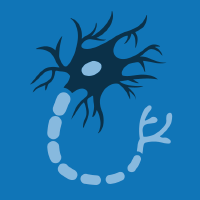Topic Menu
► Topic MenuTopic Editors

2. CIPF-IIS La Fe Joint Unit Rare Diseases, 46012 Valencia, Spain
3. UPV-CIPF Joint Research Unit Disease Mechanisms and Nanomedicine, 46012 Valencia, Spain

2. Unit of Developmental Biology and Disease Models, Centro de Investigación Príncipe Felipe (CIPF), 46012 Valencia, Spain
3. UPV-CIPF Joint Research Unit Disease Mechanisms and Nanomedicine, 46012 Valencia, Spain

2. Unit of Pathophysiology and Therapies for Vision Disorders, Centro de Investigación Príncipe Felipe (CIPF), 46012 Valencia, Spain
3. Center for Biomedical Network Research on Rare Diseases (CIBERER), Instituto de Salud Carlos III (ISCIII), 28029 Madrid, Spain
Rare Diseases Are Not Rare

Topic Information
Dear Colleagues,
In Europe, a rare disease is one that affects fewer than five people per 10,000 of population. Its low casuistry results in a relatively low interest in investing in research into these diseases and the development of therapies. Nevertheless, they exist. More than 7,000 rare diseases are supposed to exist. Most of them are Mendelian disorders, affect children, are congenital and may cause severe disability. They are often chronic and life-threatening. To make things worse, most of them lack an effective treatment. Rare diseases encompass a wide range of conditions, such as movement disorders, metabolic diseases, neurological diseases or retinal dystrophies. In this multidisciplinary topic, we invite you to submit original articles, reviews, or case reports focused on how neurodegeneration is commonly involved in the pathomechanisms of many rare diseases, and the most recent advances that may enable patients to receive an accurate diagnosis, and to achieve a rational treatment.
Dr. Carmen Espinós
Dr. Máximo Ibo Galindo
Dr. Regina Rodrigo
Topic Editors
Keywords
- rare diseases
- genetics
- OMICS
- metabolism
- biomarkers
- drug discovery
- cell therapy
- pharmacological therapy
- neurodegeneration
- neuroprotection
- neurodevelopment
- genomic edition
- clinical trials
Participating Journals
| Journal Name | Impact Factor | CiteScore | Launched Year | First Decision (median) | APC |
|---|---|---|---|---|---|

Antioxidants
|
6.0 | 10.6 | 2012 | 15.5 Days | CHF 2900 |

Biomedicines
|
3.9 | 5.2 | 2013 | 15.3 Days | CHF 2600 |

International Journal of Molecular Sciences
|
4.9 | 8.1 | 2000 | 18.1 Days | CHF 2900 |

Life
|
3.2 | 4.3 | 2011 | 18 Days | CHF 2600 |

NeuroSci
|
1.6 | - | 2020 | 22.8 Days | CHF 1000 |

MDPI Topics is cooperating with Preprints.org and has built a direct connection between MDPI journals and Preprints.org. Authors are encouraged to enjoy the benefits by posting a preprint at Preprints.org prior to publication:
- Immediately share your ideas ahead of publication and establish your research priority;
- Protect your idea from being stolen with this time-stamped preprint article;
- Enhance the exposure and impact of your research;
- Receive feedback from your peers in advance;
- Have it indexed in Web of Science (Preprint Citation Index), Google Scholar, Crossref, SHARE, PrePubMed, Scilit and Europe PMC.

